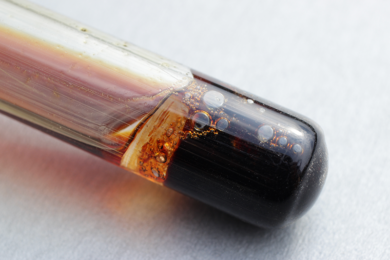AkzoNobel will present a paper at the X CIS Congress of the Mineral Processing Engineers on optimising reverse flotation of iron ore, especially magnetite ores. AkzoNobel will discuss the effects of ore type, water quality and type of collector on froth properties. The Congress will take place February 17 through 19, 2105 at the World Trade Centre in Moscow, Russia. “A key benefit of our methodology for studying froth characteristics is the ability to better predict what happens in large scale.” said Andrey Danilov, Senior Sales Manager, AkzoNobel Surface Chemistry, who will present the paper. “The methodology complements traditional flotation tests, improves knowledge of froth properties, and enables us to assist customers in situations where etheramine collectors produce too much froth.”
He cited reducing froth by using the Lilaflot 628M collector as an example of development work to support magnetite customers in improving froth stability. AkzoNobel offers flotation systems for both magnetite and haematite type iron ores worldwide. The use of silica flotation will continue to grow as more complex ores need to be mined and higher-grade iron concentrates with lower impurities are demanded by the steel industry. The company’s Lilaflot collectors for the removal of gangue (silica), are used to produce high-grade concentrates for iron ore pellet production and super-concentrates for advanced metallurgical applications. AkzoNobel says it draws on its chemistry and process know-how to customise solutions for each individual ore. “We select the best collector based on three principals. One, every ore is unique; two, every ore is treated in a unique process; and three, optimum process performance is achieved with customized
collectors,” said Josefin Lannefors, Global Marketing Manager Mining, AkzoNobel.









